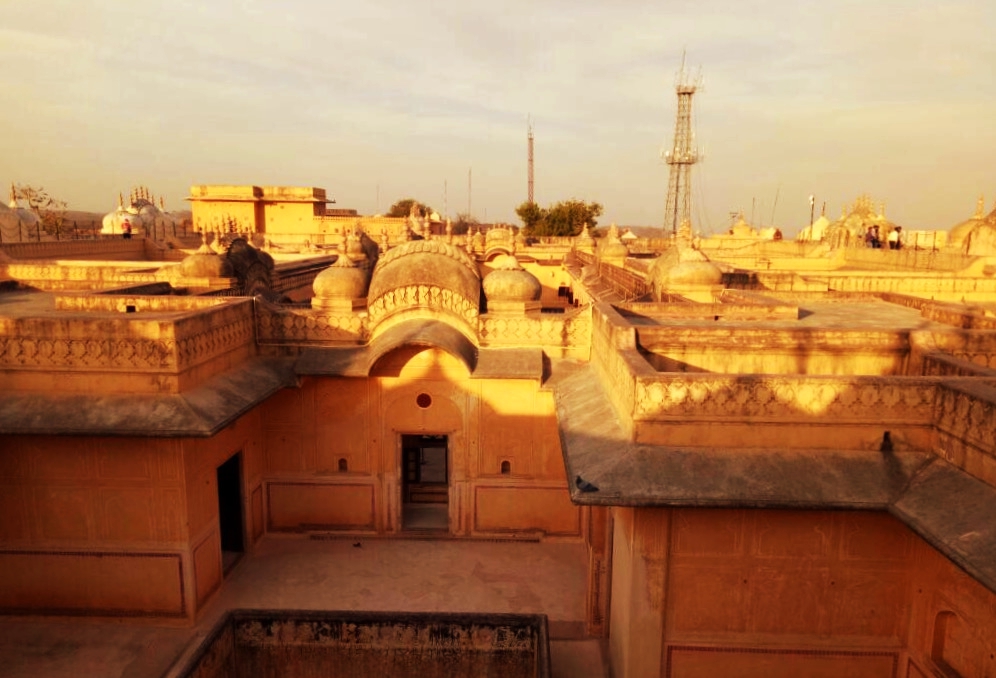Padharo Mhare Rajasthan to discover its splendours
Rajasthan, the country of Maharajas, mediaeval forts, palaces, tigers, and spirited festivals, is the jewel in India’s crown. The stunning forts and palaces of Rajasthan are the state’s main tourist draws. You’ll want to experience more once you’ve wandered through a legendary fort that once the gallant Rajputs called home, and believe you me, its war-torn past is still deeply imprinted in Rajasthan’s pride and traditions. The maharajas’ also fostered the development of beautiful handicrafts and fine arts. Agra, where the Taj Mahal characterises the city with its beautiful proportions, and Jaipur, which is painted pink and has some of India’s most vibrant bazaars, complete the well-known Golden Triangle of India.
Table of Contents
Vibrant Culture of Rajasthan
Strong forts protrude from the tops of mountains, their battle-scarred ramparts still resisting long-dead adversaries. Opening onto the winding approaches to the palaces inside are spiked doors that were formerly used to keep war elephants at bay. Turbaned men continue to haggle for camels, only now they use smartphones to register a successful transaction. Once inside, the no-frills and functional give way to the extravagant and fantastic. The buildings are decorated with carved marble and stone, fountains, and coloured glass. There are other abandoned forts and painstakingly preserved palaces spread throughout Rajasthan, including, to mention a few, the majestic Mehrangarh in Jodhpur and the fairy-tale desert outpost of Jaisalmer.

Rajasthan is known for its passion and vibrant array of colours, whether it’s the rich hues of sarees or the orange-ish wink of tigers. It is obvious why many fashion designers look to this state for raw materials and inspiration. When here, take pictures of the painted elephants in Jaipur or the excessively attired camels in Pushkar to seize the vibrant colours of Rajasthan’s celebrations. However, this well-known land of deserts and jungle offers much more than just a collection of unique attractions. The shopping and gastronomy are out of this world, and the riches of the past take pride in Rajasthan in the mind and spirit even if its vibrant cities throb with the people and tumult of a developing India.
Best Places to visit in Rajasthan
From painted Havelis to beautiful storybook whimsy, Rajasthanis are justifiably proud of their long and turbulent past, which you must learn as part of your trip across Rajasthan. Here are a few splendours worth taking a look at.
Jaipur
The city of victory, Jaipur, has a way of making visitors smile. You can find a multitude of accommodation and dining alternatives as well as a history that has been maintained and is still alive here, with breathtaking hilltop forts, magnificent palaces, and bustling, bazaars full of deals. There is an astounding variety of merchandise available for purchase, including Rajasthani crafts, textiles, artwork, and, of course, jewels in the time-honoured bazaars of the old city with the towering walls of glass that seem to be springing everywhere.
Bundi
Bundi is a charming town with winding roads lined with blue homes, countless temples, and a beautiful castle. The ancient town beneath the palace is the Rajasthan of travel guides, almost devoid of the clamorous throng and loud, polluting motors. Bundi still exudes an aura of former splendours, which is most palpably felt around the cupola-adorned fairy-tale palace that cascades down the hillside. Fields nearby are covered with lovely pink poppies from January through March. Bundi is a great area to wander around the lanes, relax while taking in the history, or observe daily life.
Ranthambore
Acres of untamed jungle scrubs are contained within this national park by rocky ridges. Up until 1970, the park served as the maharajas’ hunting grounds, an odd 15 years after it was converted into a sanctuary. In Rajasthan, Ranthambore is the ideal location to see wild tigers. The 10th-century Ranthambore Fort stands in the centre of the region, and nearby are other historic mosques and temples, lakes teeming with crocodiles, cenotaphs, and hides.
Jodhpur
The “blue city” of Jodhpur is actually blue! The old town is spread down into the haze below in a jumble of Brahmin-blue cubes. Mehrangarh is a breathtaking sight and a masterpiece of architecture. It dominates the blue city of Jodhpur. The towering walls seem to naturally sprout from their rocky perch. Although Jodhpur proper extends well beyond the 16th-century boundaries, travellers are drawn to the immediate energy of the historic blue city and the enormous fort.
Pushkar
The dunes outside of Pushkar are certainly a sight to behold when the cameleers come to town, yet Rajasthan’s famous festival is less about the titular camels and more about a rollickin’ good time. The fair, which draws over 50K camels and 200K visitors, is nominally when Rajasthani farmers get together to buy and sell their camels, cattle, and horses. Camel races and sporting events take centre stage when the festival proper starts, pushing the camels to the fringe. The camels spend their time relaxing in the dunes, riding guests about the grounds, and competing in races and dance contests.
Udaipur
Udaipur is the most romantic city in Rajasthan and possibly all of India. The cupola-topped City Palace, which rises from the sparkling waters of Lake Pichola, dominates the old city, framed by the historic Aravalli hills. The Lake Palace, another well-known sight of the city, is visible from the balconies of the palace. The Lake Palace is a reflected, fairy-tale confection that shines throughout the day and is illuminated at night.
Thar Sand Dunes
In the Great Thar Desert, 42 kilometres from Jaisalmer, the Desert National Park has been constructed. The dunes near the park’s border are one of the most well-liked excursions. This is the Sahara-like desert of Jaisalmer, which features enormous, silky, undulating folds of sand. Many camel safaris spend the night here, therefore it’s ideal to come here at sunrise or sunset, but it is still feasible to capture images of lone camels against desolate dunes.



